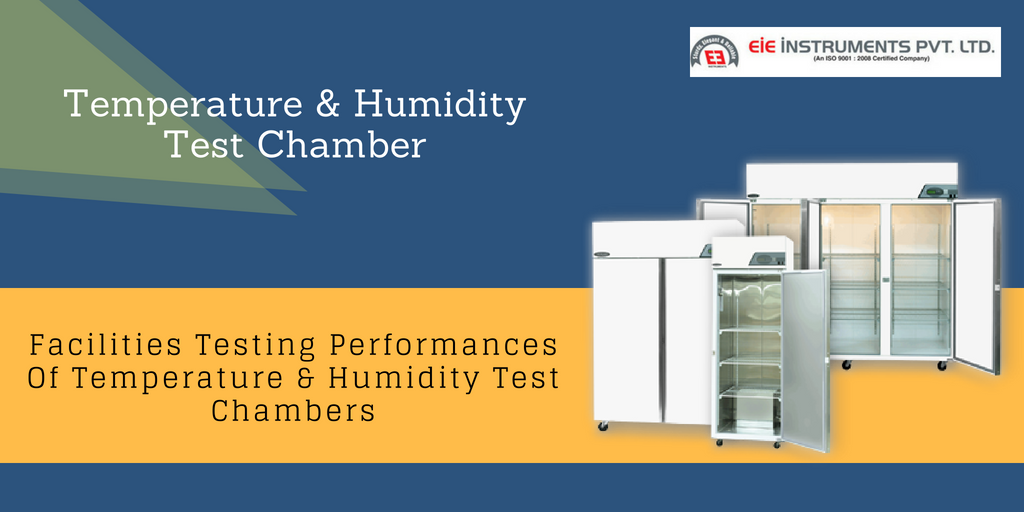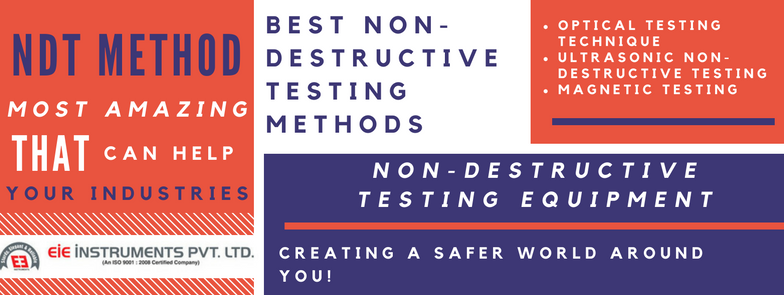Facilities Testing Performances of Temperature and Humidity Test Chambers
Service centers are equipped with all essential tools and machines. At the facility, technicians conduct tests for temperature and humidity test chamber or climate chamber using specialized equipments. The testing lab offers a test environment to the customers and delivers reliable data irrespective of the prevailing weather conditions.

There are several stages and steps performed by professionals at the facility under supervisors. The services include-
- Measurements and studies of thermal comfort for passengers both in the field and climate chamber with the help of modern stationary and mobile data logger systems and measuring technology.
- Route tests
- Engineering and consultancy services on heating, physiological, air conditioning, and acoustical matters
- Support of maintenance and procedures and more
Comfort and performance testing in the climate chamber
Technicians achieve conditions by creating typical environmental conditions inside climate chamber in a temperature range of +60°C to -33°C. This enables the proficient technicians to subject the coaches to lifelike circumstances. They simulate changes of passengers and door opening cycles to get the results.
What is the purpose of humidity chamber?
Humidity temperature chambers are used for creating artificial conditions within a controlled cabinet and test effects on product samples. These NDT equipments are applied by industries like-
- Automobile
- Semiconductor
- Cement
- Food and beverages
- Pharmaceutical
These industries use the temperature chambers to test their samples at different temperatures and humidity ranges prior bringing their products to the market.
Facilities provide customize services to their customers to meet diverse needs of distinct industries and applications. From slight changes in design to extra accessory fittings, engineers at the service center are able to deliver the exact product demanded by the customer.
Materials used for constructing chambers-
Temperature and Humidity test chamber are constructed with completely corrosion resistant material. Inner walls are designed with premium grade stainless steel and exterior is build with corrosion resistant powder coated mild steel. Between the two walls of the chamber, they use PUF insulation filling.
There are two doors in the design- one is outer solid door insulated with glass wool, and other is inner door constructed with toughened glass and fitted in stainless steel frame. To seal the doors, they apply safe silicone rubber/ profile sealing that is resistant to high temperature, ageless, and high performing.
Humidity system of temperature and humidity test chamber is equipped with stainless steel water tank. Vapor is formed through immersion heaters.
You can any time visit your local dealer to know detailed information about the machine. We recommend you to research well and get the reliable contacts from online or business directories.
Read More Related This :
In this post, humidity testing chamber makers will explain how their product ensures best weathering resistance of plastic materials. Read this article thoroughly and discover what they have to say about the topic.
How Experts are Detecting Marine Pollution Using Technology?
There are remote sensing techniques and different devices used by experts to track marine pollution. In this blog post, temperature and humidity test chamber manufacturing experts will tell how science and technology has revised its detection and monitoring techniques for marine pollution. Read this article to find more about the technology.

Remote sensing techniques for marine pollution detection
The means of detecting and tracking marine pollution more relies on the type of pollution. It is the amount of pollutant and its characteristics that determine the selection of sensor and platform.
What do experts use – aircraft or satellite?
The general way to capture image of the earth from a distance is by mounting a camera over an aircraft. Since aircrafts fly at a certain low altitude, experts can avail clear pictures with several details. Although to avail detailed images of the earth, weather needs to be good, as strong winds would spoil the measurements accuracy.
Using satellites has its own benefits with respect to planes. Experts can cover extensive area with their images and they can observe the same area systematically at every satellite pass, even across the national boundaries. It would require huge investment to let aircraft fly over the entire ocean to determine harmful substances. Satellite makes the job easier.
Another benefit is the homogeneity of the data. The data quality remains unchanged over the entire area observed. Satellite images can deliver a comprehensive picture of the overall spread of pollution.
Humidity Testing Chamber Ensures Best Weathering Resistance of Plastic
You should know that pollution is responsible for major changes to the environment. Increasing in temperature, melting of glaciers, more flood incidents, more natural calamities are not just sent by nature, human called them! We blame human because human is the only species on the earth that generates pollution.
Industries are using distinct chambers like temperature testing chambers to function. Several other technologies are intended by engineers to contribute to environment. But it is just not an only responsibility of any industry. We all need to come together and combat the curse of pollution. It’s not the job of single community but all the people are responsible for generating waste and creating pollution.
Limit the use of plastic and never dump the plastic waste in ocean is much needed effort by human race.
Technologies and scientists are there to help the environment, but everyone has to support their efforts. In this post, Temperature and Humidity test chamber makers have shared how experts are using technologies to determine marine pollution. If you have any doubt, ask in comments.
Why It’s Critical To Track Humidity In Textile Processing?
We never take humidity of the air around us seriously until we are relaxing in a sauna or on vacation near the equator. But this is not the case with textile industry as it uses temperature and humidity test chamber to track the humidity levels. It’s because humidity is a concern of textile processing as when it gets wrong, it can stop production, harm staff, and damage machinery. It is necessary to keep the humidity level check and right to maximize product weights, enhance quality and make machine more efficient at work and operation.

Humidity in air is measured as “relative humidity”. It is explained as the amount of water present in a sample of air compared to the capacity of air to hold maximum amount of water at same specific temperature. It is expressed in a form of 0 to 100%.
Cold air has low capacity to hold moisture unlike warm air and thus, the air humidity is relative to its temperature. For instance, a sample of air at 10 degrees Celsius will have less capacity to hold moisture than the same sample of air at 20 degrees Celsius. It doesn’t matter if the water amount is same in both samples, warmer sample has a lower humidity as it has potential to hold more than the cold air sample.
Why humidify?
Textiles are hygroscopic, in other words, they absorb or release moisture on the basis of the relative humidity found in surrounding air. If the air is drier than textile’s equilibrium relative humidity, textile will release its moisture in the air. If the air is excessively humid, textile’s moisture content will increase. This gain and loss of moisture occurs at every stage.
Moisture has a direct impact in the textile weight. Since the textile yarns are sold by weight, if a drop in humidity results in 4% reduction in weight, textile manufacturers will need 4% extra fiber for inclusion in the sale product.
Complete loss of moisture is also unsuitable as the act of processing will increase the material temperature, which will make it drier. When textile absorbs the moisture, the quality and performance of the fabric get improved.
This is why textiles have specialized Temperature and Humidity test chamber at the facility to track the moisture and temperature. This helps them in attaining right humidity level for textile production.
This is the reason why textiles cannot neglect humidity at all.
Humidity Oven Suppliers Helping Different Industries With Their Products
Humidity ovens are used in several industries like textiles, liquor, paper, automotive, wood working, etc. Humidity oven suppliers are approached by industries that use their products for testing various electronic, electrical components, varnishes, cement, corrosion studies on mechanical parts, etc. These ovens are used for controlling precise temperature and humidity levels to deliver precision quality results.

What is the use of these ovens?
Humidity control ovens are intended for special function. Humidity is the moisture level present in the environment. High level of humidity results in breeding of mold, dust mites, mildew, and other unwanted biological growth.
Humidity control is very important for good health especially if there is a case of respiratory problem. Humid environment makes human uncomfortable and results in excessive sweating. This problem can be fixed by installing dehumidifier that removes the excess humidity and gives you better environment to breathe.
It is critical to maintain right level of humidity for industrial applications. To keep electrostatic discharge from building up, there is a need to control humidity. This is done with the help of humidity control ovens. These are box shaped machines designed for controlling humid environment for testing.
Humidity chambers or control ovens are manufactured in distinct types and sizes depending on their applications in scientific, forensics, pharmaceutical, and electronic industries. Manufacturers intend these ovens with hermetically sealed compressed unit, condenser, and evaporation coil. The design lets the oven to maintain the temperature and humidity according to a pre specified range.
These products are widely accepted in labs, research centers and various hospitals. Temperature and Humidity test chamber machines are equipped with much functionality like high temperature safety cut off and overloading cut off relay for compressor. Some more important features are as under-
- Precise monitoring of temperature and moisture
- Heating by durable tubular heaters
- A dual wall with PUF insulation
- Battery back up
- Microprocessor controller along with LCD display and sensors of capacitance types
- Display screen to show humidity and temperature levels
- Hermetically sealed compressor with refrigerant that contains no CFC
- PUF insulation filled with machine to prevent void pockets
Apart from these features, some humidity oven manufacturers are also offering ovens having the option of setting high or low alarm points, memory for storing maximum 1000 records, connection with printer, etc. If you need more options, you can talk to your humidity oven supplier today.
Read More Related This :
Humidity is one of the misread terms when it comes to environmental testing chamber. This is because the relative humidity percentage is temperature specific. Humidity testing chamber suppliers are discussing technical specifications for environmental chamber in this post.
Non-destructive Testing Equipment – Creating a Safer World Around You!
Non-destructive testing is widely utilized by industries to evaluate metal properties to avoid any serious damage in future. This is taken as one of the most cost effective testing techniques that save time and money both. The technique makes sure that mechanical and physical properties of metals are maintained in safe and reliable style.

There is special Non-destructive testing equipment to check discontinuity or cracks in materials. These materials are responsible for final shut down or any product failures. The equipments also check performance of product under stress and high temperatures. Sadly, sudden product failure may result into heavy economic loss or productivity slow down. This is the reason non – destructive testing methods are used consistently by industries to maintain confidence in product quality and its services.
In this blog, we will discuss on some of the best non-destructive testing methods and how they create safer world around you.
- Optical testing technique
This testing method is good to check surface discontinuities that could affect working of machine adversely. Even after following well defined manufacturing process, there are few defects that are not visible to human eye. You need special tools or techniques to visualize these defects. Non-destructive testing equipment just works amazing here.
- Ultrasonic Non-destructive Testing
The ultrasonic testing is performed on metals where cracks are not visible at all. The process not only detects cracks but it calculates depth of cracks too. In this way, crack handling gets much easier and product can be maintained in best possible way.
- Magnetic testing
The testing is performed on iron components to judge affect of magnetic field in worst conditions. The testing will check flow of magnetic current and irregularities at surface of materials. Scientists are always in practice to develop most amazing NDT methods that can help your industry the most.
Complete Your NDT Testing Using Specialized Equipments
The noninvasive techniques help in determining the integrity of material, component or structure; or quantitatively measure some characteristics of an object. In other words, it helps in checking or measuring without doing harm. There are six common NDT methods that you can perform using special NDT testing equipments-

- Visual
- Liquid penetrant
- Ultrasonic
- Magnetic
- X-ray
- Eddy current
Visual inspection is most practiced and fruitful method. For this method, you will require tools – fiberscopes, borescopes, mirrors, and magnifying glasses.
Liquid penetrant inspection is also a great thing to know about the defects. A liquid is used to the part surface and allowed time to seep into surface breaking defects. The excess liquid is wiped off from the surface. Then a powder is applied to make the defect visible on the surface. Visual inspection can be the final step. The liquid penetrant used in the process is often loaded with a fluorescent dye and you can make checks with UV light.
Magnetic particle inspection
The part is magnetized and finely milled dye pigment coated iron particles are applied to the sample. These iron particles are attracted to magnetic flux leakage fields and will develop a cluster. You can detect it visually under good lighting conditions.
You need to make a test report for such experiments by following the report preparation standards. The report must have abstracts, introduction, results, experimental process, discussions, results, and references. The benefits and limitations of every NDT technique need to be stated precisely in your reports. Proper NDT testing equipments should be employed in the testing process for precise results. You should also answer the queries asked by people at the end of the experiment installing the components of your report. It is always good to return the report on time.
Read More Related This :
TDS checking device is one of the useful soil testing instruments that checks total dissolved solids in water. Dissolved solids are any minerals, metals, salts, anions or cations dissolved in water.
How To Buy Material Testing Equipment?
Important considerations to shop premium range of material testing tools
There are several industries relying in material testing equipments to evaluate the mechanical properties of components and materials. Most vital parameters including compression, tension, torsion, flexure, and hardness are taken under consideration while evaluating the materials and grading them.

There are many materials that are tested prior being used in sorts of applications. Some of these materials are-
- Biomedical
- Plastics
- Metals
- Spring
- Wood
Electrical components and electronics
Wood testing ensures a reliable and easy way to determine deformation and strength properties of wood. Bend testing is ideal to test its strength as wood is often used in the form of beams where resistance to bending is a significant parameter. Other than this, fixtures are also tested to measure their endurance and strength and the testing of these materials will help in selecting the right materials for industrial and domestic applications.
Manufacturers and suppliers bring several types of material testing machines that can be used by distinct industries, such as construction, plastics, and ceramic units. Customers from all over the world can contact them and collect the equipments as per their requirements and needs.
Use of material grinding equipments
Grinding equipments like rod and ball mills are used for grinding stones and hard materials to make them smooth and customized. Rotary drum keeps boulders and steel balls in motion that causes the breakage of large pieces of rocks- this leads to compressive grinding of fine particles. These machines are usually useful in grinding platinum, copper, gold, zinc, lead, and silver.
There are several B2B online portals from where you can source the latest innovations and technological advancements in these equipments. You can find them online and book your material testing equipment and get it delivered at your place. Make sure the company has good reputation in the market.
Read More Related This :
Experts rely on permeability test method to measure the rate of water flow through soil. Under this method, water is forced by constant pressure across the soil specimen and the flow rate is determined. They usually perform this test to determine the suitability of gravels and sands for drainage purposes and is build on remolded samples.